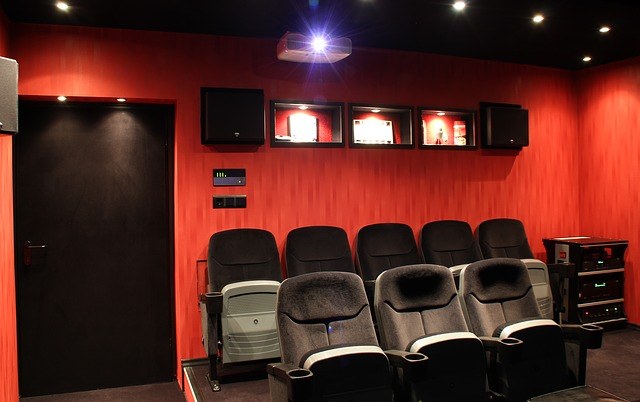I am sure some architects do soundproofing for home theater well. However, I was called recently to assess a botched job.
More...
Botched home theater design
A construction manager building a 10,000 sq foot high-end home called me to soundproof a home theater under construction. When I arrived, I found the home theater in the basement of the large house virtually completed. The room was framed with 2” x 6” studs, and the wall cavities were filled with rock wool insulation. One layer of ½” drywall was installed throughout. The ceiling had numerous air vents with ducts connected to the house’s ventilation system. The ceiling also had numerous recessed lights. A single door separated the home theater from a large rec room in the basement.
The construction manager told me that his client wants to have the home theater soundproof so that a loud home theater performance does not disturb the rest of the house. He asked me what kind of wall treatment he needed to achieve this objective,
It was clear that the construction manager needed to understand the difference between sound absorption and sound blocking. I had to explain to him that sound absorption applied to walls only provides an improved listening experience but does not provide the sound blocking required for soundproofing.
In order for a home theater to be reasonably soundproof, walls and ceiling must have a minimum Sound Transmission Class (STC) of 60. The room as it was built had STC 40 at best. It also had numerous other deficiencies that provide a path for noise:
- Recessed lights in the ceiling.
- Untreated embedded electrical boxes in walls and ceiling.
- Air supply and return ducts that allow noise to transfer to the rest of the house.
- A single standard interior door that will never provide sufficient sound attenuation.
The client was not happy when I told him that he needs to virtually demolish what he had just built and redo it correctly.
Proper home theater design
A sufficiently soundproofed home theater must have the following features:
- Walls and ceilings must have sufficient sound attenuation, especially at lower frequencies. Ideally, walls with two rows of studs should be provided.
- On the interior of the home theater, install two layers of drywall over resilient clips and furring channels.
- At a minimum, the ceiling should have two layers of drywall over furring channels and resilient clips.
- No recessed lights should be installed in the ceiling.
- Air distribution should be designed to minimize noise transfer. This usually requires the installation of silencers in the ducting, both air supply and air return.
- The entrance to the home theater should be through a small foyer with two doors. A single door will never provide sufficient sound attenuation unless a special soundproof (and expensive) door is used.
Other aspects of the home theater design are outside the scope of this article. These include:
- Speaker locations.
- Use and locations of bass traps.
- Locations of sound absorbers.
- Locations of sound diffusers.
These elements are to achieve optimum listening experience in the home theater. This article covers more of the issues.
Proper design of home theater requires specialized expertise. Architects and builders should seek the advice of a specialist at the design stage. Building it correctly the first time is much cheaper than demolishing and rebuilding a poorly constructed project.
Please use the button below to obtain a consulting quote in the Toronto area from the author of the article.
Your feedback is always appreciated. Please fill-in the form below and submit your comments.
